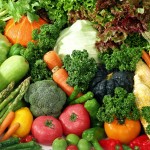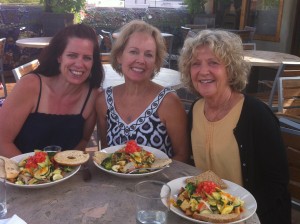We Need to Know the Truth About Vitamin D, which affects Covid 19 rates and many organs in the body
Bonus Information on the Important Mineral, Selenium-do not under estimate the power of this mineral
A scientific review, published in 2006, concluded that the increase in seasonal flu virus is due to the prevalence of vitamin D deficiency in the winter months. According to a Spanish study published online October 27, 2020, in The Journal of Clinical Endocrinology & Metabolism.
82.2% of COVID-19 patients tested were found to be deficient in vitamin D.
Vitamin D is Not a Vitamin
Vitamin D is a group of fat-soluble secosteroids (steroids) responsible for increasing intestinal absorption of calcium, magnesium, and phosphate, and many other biological effects. In humans, the most important compounds in this group are vitamin D3, also known as cholecalciferol, and vitamin D2, ergocalciferol.
The major natural source of the vitamin is the synthesis of cholecalciferol in the lower layers of skin epidermis through a chemical reaction that is dependent on sun exposure (specifically UVB radiation.) Cholecalciferol and ergocalciferol can be ingested from the diet and from supplements but there are only a few foods that contain much vitamin D. Flesh of fatty fish like salmon, mushrooms exposed to ultraviolet light, and “fortified” milk products.
The skin naturally produces vitamin D3 (cholecalciferol) because ultraviolet-B (UVB) radiation acts on 7-dehydrocholesterol, after which a thermal reaction occurs. That vitamin D travels through the bloodstream to the liver and kidneys, where it receives a hydroxyl (•OH) radical and becomes 25-dihydroxyvitamin D (calcidiol). The level of calcidiol measured in blood is one’s “vitamin D level.” Calcidiol then circulates in the blood and can be converted to 1,25-dihydroxyvitamin D (calcitriol), the active metabolite of vitamin D. Calcitriol helps regulate how much calcium the intestines absorb and the calcium concentration in the blood. Calcitriol acts as a key that can unlock vitamin D receptors (VDRs), which nearly every cell in the body has. VDRs are attached to chromosomes and, when activated, can affect the expression of hundreds of genes–making some more responsive and others less responsive including the gut, brain, heart, pancreas, skin, kidneys, and immune system, which all have receptors for 1,25 (OH)vitamin D.
Ideally, we want to get our vitamin D from the sun. That is not practical during the winter months, but during the summer I encourage you to give it a try. Lay in the sun with the least amount of clothing on (bikini’s anyone?) for 15-20 minutes during the peak sun hours of 11 am-2 pm. Do not wear sunscreen. Do this at least three days per week. The sun should hit your belly where D is best absorbed.
How much vitamin D do you get during your 20 minutes? There is something called the Fitzpatrick skin types. Skin type I is fair skin that always burns, never tans; type III is darker white skin that burns and tans; type V is brown skin that rarely burns, tans easily. At noon in Miami, someone with Fitzpatrick skin type III would require 6 minutes to synthesize 1000 IU of vitamin D in the summer and 15 minutes in the winter. So you can see, it depends on your skin type and the time of year, hence getting tested for Vit D is crucial to really know.
Here is a link for an at home test if your doctor will not order one for you. Vitamin D Test
Vitamin D and Weight
- If you weigh more than the average person your age your vitamin d requirements will need to be adjusted upward
- Vitamin D levels tend to be low in obese individuals as well as in those who are physically inactive, and one researcher even stated that vitamin D deficiency is the primary cause of common obesity and metabolic syndrome
- Several studies have also confirmed a link between vitamin D deficiency, abdominal obesity and visceral fat, as well as the possibility that increasing your vitamin D levels may improve weight loss
More than 80% of 200 patients hospitalized with COVID-19 had vitamin D deficiency. Patients with lower vitamin D levels also had higher blood levels of inflammatory markers. But the researchers found no link between low D levels and how severe the disease was.
Spanish researchers tested how prescription vitamin D could affect people hospitalized with COVID. Of the 50 who received it, only one needed the intensive care unit (ICU), and none died. Among 26 patients who did not receive the vitamin, 13 needed ICU care and two died.
Many functional medicine doctors are testing and prescribing Vitamin D for their patients. Unfortunately, you have to “ask” for a vitamin D test from a Western medicine doctor, and many times insurance won’t cover this test! I’m highly recommending that my clients either ask their doctors, or self-test to get an accurate reading of their levels.
The Cancer Connection
There’s been an ongoing debate over the past number of years as to whether or not vitamin D helps prevent cancer, and to what extent. Now, new research supports that postmenopausal women with higher levels of vitamin D (≥60 ng/ml) have a much lower risk of breast cancer than women with low blood serum levels (<20 ng/ml) of vitamin D. Interesting, the same numbers we are seeing with COVID!
There was a study done by the University of California, San Diego School of Medicine, with help from specialists from Creighton University in Omaha, NE, the Medical University of South Carolina in Columbia, and the nonprofit organization Grassroots Health in Encinitas, CA. The study focused on two randomized clinical studies and a prospective cohort.
Researchers looked at post-menopausal women over the age of 55 who were all cancer-free at the beginning of the trial. The researchers followed the health of these women for four years and monitored for any potential signs of breast cancer.
The two trials contained 3,325 participants between them, and all drew research from a prospective cohort study with an additional 1,713 participants. There were 77 new cases of breast cancer among all the study participants.
Researchers discovered that there was an 82% lower incidence rate of breast cancer in women with 25(OH)D concentrations ≥60 versus those with levels under 20 ng/ml. The daily recommended value of 800 IU’s of Vit D3 is way to small. I recommend at least 5000 IU’s daily.
An earlier study that looked at women in the U.K., found having a vitamin D level above 60 ng/mL resulted in an 83% lower breast cancer risk, which is nearly identical to Grassroots Health’s 2018 analysis.
Cancer cells survive by exploiting cellular differentiation; proliferation; and apoptosis, angiogenesis, and metastasis. UVB exposure and vitamin D reduce the risk of about 15-20 endothelial cancers. The evidence is strongest for colorectal and breast cancer. People with vitamin D levels above 30 ng/mL tend to live much longer after a cancer diagnosis.
Optimal Vitamin D levels are in the 60-80 ng/mL range.
Skin Color Impacts Your Vitamin D
The color of your skin has correlations to your vitamin D level, and we’re also seeing racial disparities in COVID-19. As noted in Detroit, Michigan, where African-Americans account for 14% of the population, they accounted for 40% of COVID-19 deaths.
Vitamin D deficiency likely plays a role in this racial disparity, although nutrition, obesity and diabetes rates also contribute to immune dysfunction. It’s important for people with darker skin to realize that the more melanin you have, the more sun exposure you require to make sufficient amounts of vitamin D.
Magnesium Is Necessary to Activate Vitamin D
It has been estimated that over half the population is low in magnesium as well. This is because magnesium is primarily found in leafy green vegetables. A USDA survey showed that the average American only eats 1.5 cups of vegetables a day, and primarily it’s potatoes and bananas!
Magnesium helps to activate vitamin D, as the enzymes that metabolize vitamin D in your liver and kidneys require magnesium. Again, vitamin D is “a fat-soluble steroid” and it has to be converted by the liver to be in the active form the body can use.
Supplementation
Once you have been tested, depending on your results, you then know how much to supplement with. If you don’t want to get the test, but want to take a safe amount, 5000 IU daily during the winter months would be a good place to start.
Those who came into the hospital with COVID and were low (below<20 ng/ml) were put on massive doses of vitamin D for one week (over 100,000IU daily.) You may have been prescribed a vitamin D by your doctor in the past when your test came up low, and the dosage was very high for a short period of time. Remember, this is a fat-soluble hormone, so it stores in the body. If you carry excess fat on your body your need for vitamin D will be higher. Research shows that the higher the body weight, the more vitamin D you need.
While deficiency of vitamin D impacts health negatively, ingestion of extremely high doses of vitamin D can cause hypercalcemia, a condition in which the blood’s calcium level is above normal. The highest daily ‘safe’ dose of vitamin D is 10,000 IU, and that should be for a short time.
Do You Need Vitamin K With Your D?
This question has been asked many times recently. Most people are taking vitamin D for bone health. Calcitriol helps regulate how much calcium the intestines absorb and the calcium concentration in the blood. Calcitriol acts as a key that can unlock vitamin D receptors, which nearly every cell in the body has.
If you are taking vitamin D for bone health, then yes, it’s important to have “K” on board as well. Vitamin K activates osteocalcin, a protein that promotes the accumulation of calcium in your bones and teeth. Vitamin K also activates matrix GLA protein, which prevents calcium from accumulating in soft tissues, such as the kidneys and blood vessels.
It’s Essential
Vitamin D deficiency has now been linked to breast cancer, colon cancer, prostate cancer, heart disease, depression and weight gain. These studies show that people with higher levels of vitamin D have a lower risk of disease, so what do you have to lose? Check your levels and get that vitamin D in an optimal range!
Food High in Vitamin D
- Swiss Cheese, Eggs, Yogurt,
- Fortified cereal, milk and OJ,
- beef liver, pork fats and meats, tofu
- Tuna, salmon, caviar, sardines, mackeral
- Duck fat
- Mushrooms
- Cod liver oil
- Chlorella and spirulina
- Healthy fat such as that available in nuts, seeds (such as sunflower, flaxseed) and seed oils like avocado oil, pure ghee, fortified milk, and olives, enhance the absorption of vitamin D.
The Benefits of the Super Mineral Selenium
We often hear of the benefits of magnesium—and there are many. But minerals tend to be an underestimated necessity for optimal health. In fact, certain minerals are called “essential” for our health, and selenium is one of those.
Selenium is considered a trace mineral; one that doesn’t require large doses to make a difference, and yet it is essential for optimal health. Selenium pairs up with vitamin E to become an even more powerful antioxidant in the body. It is also vital to the thyroid gland and proper thyroid function. It works alongside vitamin C and iodine to help protect the body’s immune system, and is a powerful antioxidant to help create the master antioxidant called glutathione.
- Thyroid Health
Selenium works with iodine to protect and maintain proper functioning of the thyroid hormone, which governs metabolism, including fat-burning, in the body. Your body utilizes two primary types of thyroid hormone, T3 and T4. The body must convert T4 into the more usable form of T3 in order to put it to use.
The thyroid gland contains the largest amount of selenium in our bodies and it is essential for the thyroid gland to produce T3. When your body runs low on selenium, it cannot convert T4 into T3, which can lead to a condition of low thyroid or hypothyroidism. Hypothyroidism is characterized by weight gain, loss of energy, loss of hair, puffiness, poor digestion and sometimes anemia. Supplementing with selenium can help reverse or lessen the effects of hypothyroid symptoms and bring the thyroid back into healthy status.
Another malfunction of the thyroid gland results from Hashimoto’s disease, an autoimmune disease in which the immune system attacks the thyroid gland, causing a combination of problems including hyperactive thyroid and hypothyroid. This study on 6,000 people found low levels of selenium were associated with an increased risk of Hashimoto’s disease and hypothyroidism.
Increasing selenium will slow down the anti-thyroid activity of the immune system and help it to function more normally. Selenium also helps with thyroid disease such as Graves’ disease.
- A Powerful Antioxidant
Antioxidants are those powerful compounds in foods and supplements that fight disease, helping us stay young, protecting our DNA, and fighting free radicals in our bodies. Free radicals are those harmful byproducts of normal living that come from excess inflammation, stress, toxins and a poor diet.
Too much oxidative stress can lead to diseases like heart disease, strokes, cancer, Alzheimer’s and early aging. Many foods contain high levels of antioxidants, but foods and supplements with selenium work best to combat oxidative stress and protect the body.
- Prevents Cancer
Even in trace amounts, selenium wields amazing power preventing and fighting cancer. There is a strong correlation between levels of selenium in the blood and the risk of certain cancers. This is thought to be because selenium helps with our cells’ ability to repair DNA. When DNA is damaged, normal cells do not reproduce properly, and cancer cells may appear instead.
One article that appeared in a prominent cancer journal stated that “the possible benefits of selenium in humans is supported by extensive literature … indicating that low, non-toxic levels of selenium can protect against cancer.”
This review of multiple studies on selenium found that having higher blood levels of selenium protected well against breast, lung, colon and prostate cancers. Antioxidants are one of the best types of weapons to use against cancer, and since selenium is such a serious antioxidant, it stands to reason that it is an extremely valuable tool to fight cancer.
Most studies, however, show that eating foods high in selenium is more helpful to fight cancer than just taking a selenium supplement. This may be due to the fact that selenium’s effect is magnified when consumed with other disease-fighting nutrients.
- Heart Health
A diet rich in selenium may prevent heart disease, as studies show that low selenium levels have been linked to an increased risk of heart attacks and strokes. In this analysis of 25 observational studies, increasing selenium levels by 50% was corelated with a 24% reduction in heart disease.
Heart disease is associated with high levels of inflammation, which causes plaque to build up in the blood vessels as a result. Selenium lowers inflammation in the body which helps lower the chances of plaque buildup and blood clots that can lead to strokes and heart attacks. Selenium’s powerful antioxidant capability and its ability to lessen oxidative damage also protect against the buildup of plaque in blood vessels which contribute to heart disease and strokes.
C-Reactive Protein or CRP, is an inflammatory marker in the body that usually signals the potential for heart disease. 16 different studies on over 400,000 people with heart disease showed that taking selenium supplements decreased CRP, and therefore significantly reduced heart disease and strokes as well.
Incorporating selenium-rich foods into your diet is a great way to keep levels of oxidative stress and inflammation to a minimum.
- Powers up the Immune System
Our immune systems perform a variety of life-preserving functions such as fighting off dangerous bacteria, viruses, and fungi. Our immune systems also fight infection and help to heal wounds on the body as well. When the immune system goes awry, it can become overactive and attack the body. This becomes autoimmune disease, which can manifest in various systems.
Selenium’s antioxidant capabilities lower inflammation and protect the immune system by lowering oxidative stress. The immune systems then begins to respond appropriately and enhances immunity to disease, infection, and lessens autoimmune flareups.
A selenium deficiency slows the immune response to fighting infections. Patients who are fighting more serious infections such as influenza A, tuberculosis and hepatitis C can also benefit from selenium supplements.
6.Improves Asthma
Asthma is an inflammatory response to allergens and other types of inflammatory agents, including those in the diet and the environment. When bronchial tubes become inflamed, they can constrict or spasm causing coughing, wheezing, and extreme shortness of breath. This can become a life-threatening condition.
Normal medical treatment for asthma is corticosteroids in the form of inhalers to dampen the inflammatory response and to help ease up airways. Steroid treatment has many unpleasant side effects and long term use is not good for health.
Since asthma is associated with high levels of oxidative stress and inflammation, selenium helps to lessen these symptoms and help the asthmatic person breathe more easily.
This study showed that asthmatic patients with higher levels of selenium in the blood had better lung function than those with lower levels. Patients given 200mcg of selenium a day were able to reduce their usage of steroid medications to help with their breathing.
7.Testosterone and Fertility
Selenium has been thought to increase testosterone in males, but a study published in The Journal of Urology looked at the effects of selenium supplementation on testosterone levels in infertile males.
While the selenium supplementation had little effect on testosterone levels, it did increase sperm motility and blood flow, two important components for conception. Selenium is found in the sperm mitochondria and can affect the behavior and proper function of sperm as they move through the vagina to fertilize an ovum.
For women, it’s thought that selenium can help to reduce the chances of miscarriage as well, but more research on this is still needed.
While low selenium levels cause problems with fertility, too high of levels of selenium can affect fertility as well, so it’s important to be sure to get the correct dosage, and don’t overdo it.
How do you know if you need Selenium?
Selenium in food comes from the soil, and food levels depend on where your food is grown. People who are at great risk include those who do not eat many fresh vegetables, or who live in parts of China or Europe where there are low levels in the soil.
People who are undergoing kidney dialysis, or who have serious illnesses such as HIV may also need more selenium. Celiac disease, an autoimmune disease where the body’s immune system attacks the portion of the small intestine that assimilates nutrients are also at risk for selenium deficiency.
Symptoms include:
- Low thyroid/Hashimoto’s thyroid
• Weak immune system
• Infertility
•Fatigue
• Brain fog
• Hair loss
The best way to get selenium is from the food you eat. Foods that carry plentiful amounts of selenium include
- Brazil nuts (contain high levels of selenium so it only a few),
- halibut, yellow fin tuna, oysters,
- sunflower seeds,
- shiitake mushrooms,
- chicken, eggs, and sardines.
The current daily recommendation is 55 micrograms per day for adults and children over the age of four. Pregnant and nursing women need about 70 micrograms.
While selenium is an essential mineral, you only need small amounts of it. Intakes of selenium that are too high can be very harmful. Signs of too much selenium include hair and nail loss or brittleness, skin lesions or rashes, nausea, irritability and nervous system issues.
Also be careful with interactions with other medications and supplements including niacin, antacids, chemotherapy, steroids, statins and birth control pills.
These interactions mostly have to do with supplemental selenium not from food.
I use selenium from lifeextension.com
Some of the organs that Vitamin D3 communicates with are:
- bone marrow,
- breast,
- colon,
- intestines,
- kidney
- lung,
- prostate,
- retina,
- skin,
- stomach
- uterus
- liver
- brain
- and though it is not an organ…the immune system






